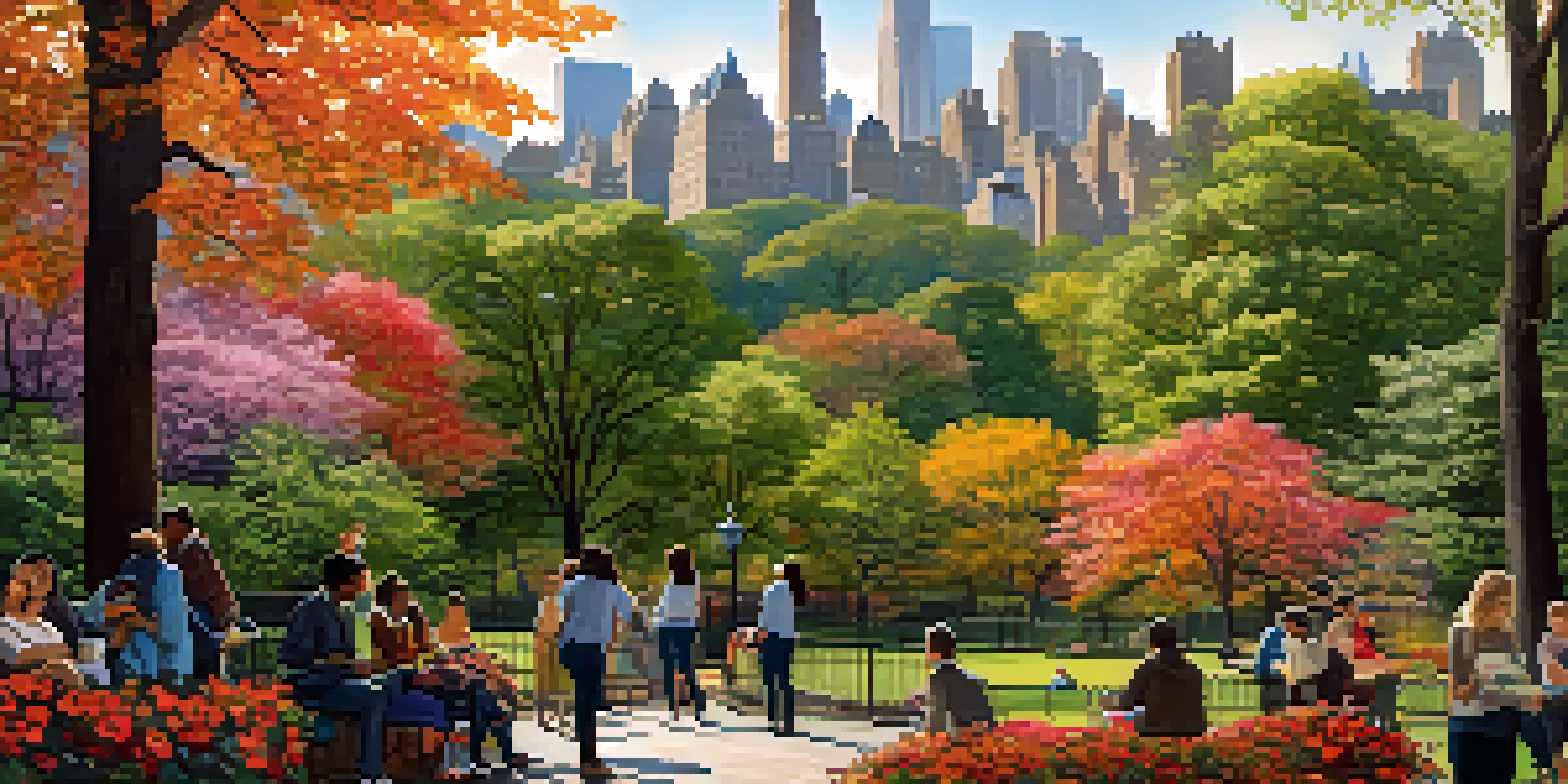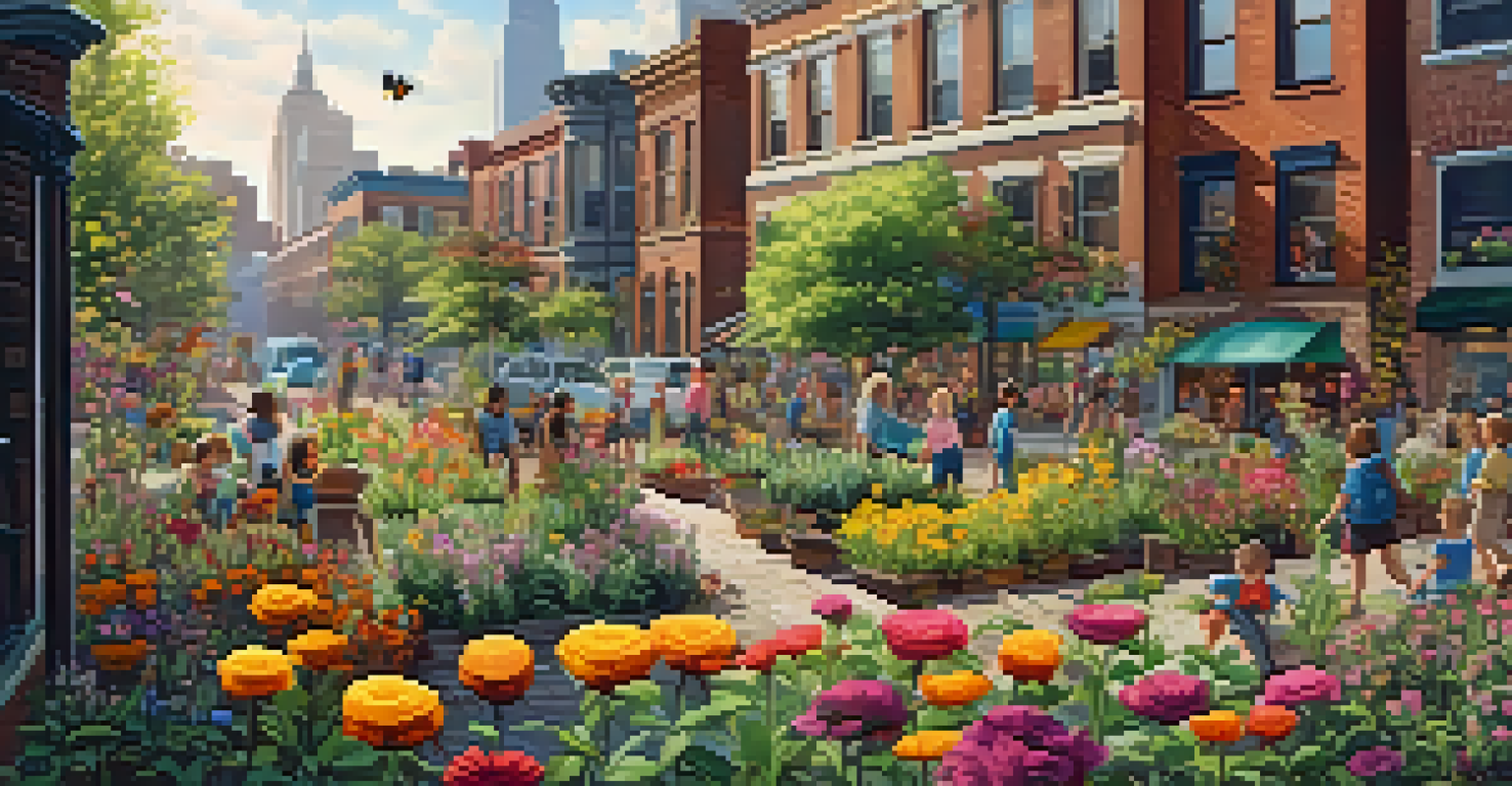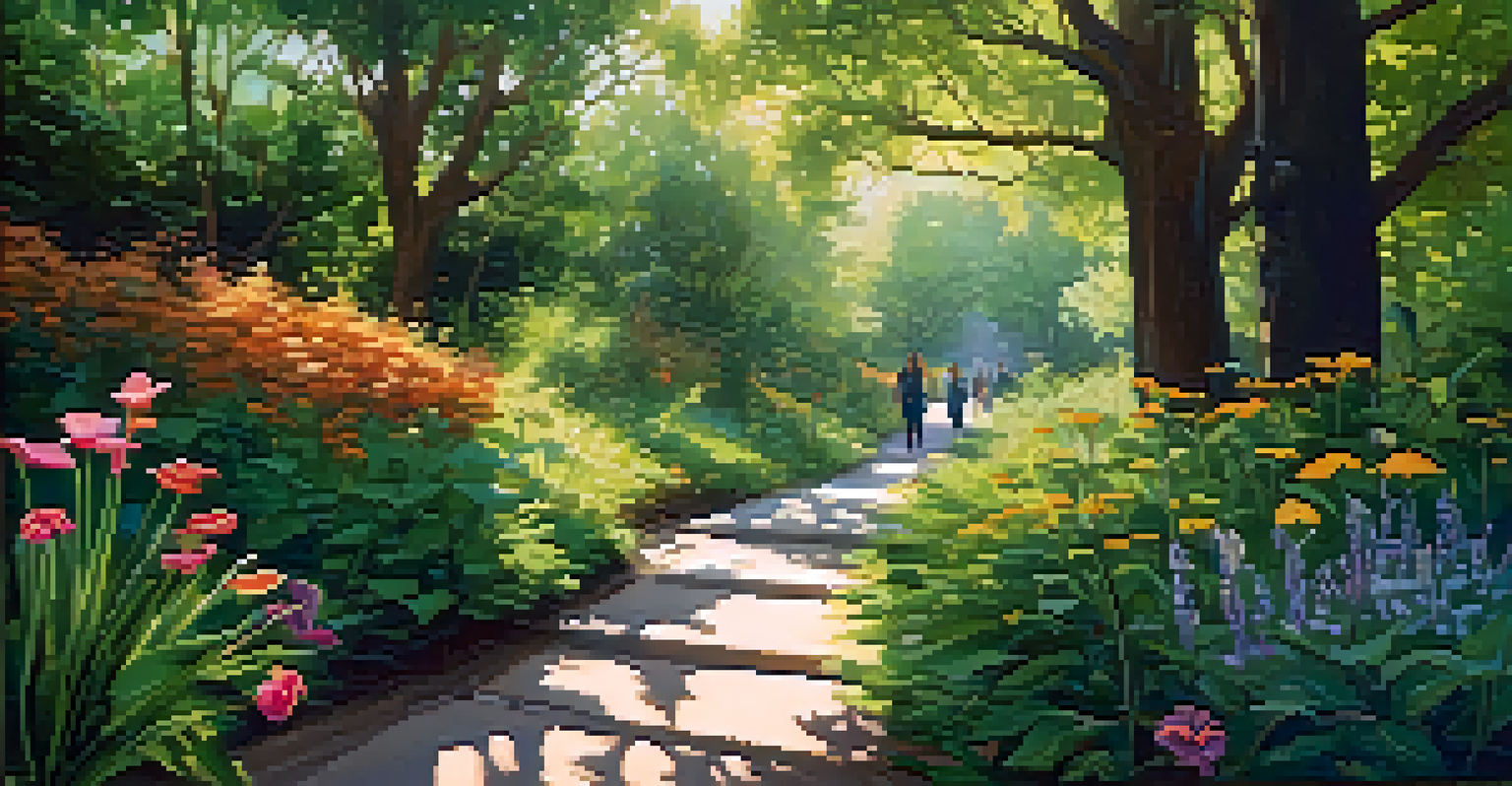Urban Wildlife Conservation: Protecting Nature in NYC

Understanding Urban Wildlife in New York City
New York City is often viewed as a concrete jungle, but it's also home to a surprising variety of wildlife. From the famous peregrine falcons that nest on skyscrapers to the raccoons rummaging through trash cans, urban wildlife is thriving. This unique blend of nature and urban life presents both challenges and opportunities for conservation efforts.
In every walk with nature one receives far more than he seeks.
The presence of wildlife in NYC highlights the importance of preserving green spaces, like parks and gardens. These areas serve as critical habitats for birds, small mammals, and even insects, contributing to the city's biodiversity. By understanding the species that inhabit these spaces, we can better appreciate the natural world even in a bustling metropolis.
Moreover, urban wildlife can play a vital role in keeping ecosystems balanced. For instance, birds help control insect populations while pollinators support plant health. This interconnectedness reminds us that nature finds a way to adapt, even in the most unexpected urban settings.
The Role of Green Spaces in Urban Wildlife Conservation
Green spaces are the lifeblood of urban wildlife conservation. Parks, community gardens, and even green roofs provide essential habitats for various species. In NYC, places like Central Park and Prospect Park not only offer a respite for city dwellers but also serve as critical refuges for wildlife.

These green spaces create corridors that allow animals to move safely through the urban landscape. For example, migratory birds often rely on parks as resting points during their long journeys. By preserving and enhancing these areas, we ensure that wildlife can thrive amidst the city's hustle and bustle.
Urban Wildlife Thrives in NYC
Despite being a concrete jungle, New York City hosts a surprising diversity of wildlife that thrives in its green spaces.
Additionally, urban gardens can attract pollinators like bees and butterflies, which are essential for maintaining healthy ecosystems. Community involvement in these green initiatives fosters a sense of stewardship and awareness about the importance of preserving urban wildlife habitats.
Community Engagement: A Key to Urban Wildlife Conservation
Community engagement is crucial for the success of urban wildlife conservation efforts. When locals participate in conservation activities, they develop a deeper connection to their environment. Programs that involve citizens in monitoring wildlife, like bird counts or clean-up days, can inspire a greater appreciation for nature.
The clearest way into the Universe is through a forest wilderness.
Educational initiatives, such as workshops and guided nature walks, also play a significant role. These programs help residents understand the importance of urban wildlife and the challenges they face. By empowering the community with knowledge, we can foster a culture of conservation.
Moreover, engaged communities can advocate for policies that protect urban wildlife. When people voice their concerns about habitat loss or pollution, city officials are more likely to take action. This grassroots approach can lead to more effective conservation strategies that benefit both wildlife and residents.
Challenges Facing Urban Wildlife in NYC
Urban wildlife faces numerous challenges in NYC, from habitat loss to pollution. As the city continues to grow, green spaces are often sacrificed for development, leaving animals with fewer places to live. This loss of habitat can lead to declining populations of certain species, disrupting the natural balance.
Pollution is another significant threat to urban wildlife. Contaminated water sources and air pollution can harm the health of animals and their habitats. For instance, plastic waste can entangle marine life in the nearby waters, affecting the delicate ecosystem.
Community Engagement is Essential
Involving locals in conservation efforts fosters a stronger connection to nature and promotes effective advocacy for wildlife protection.
Additionally, human-wildlife conflict is a growing concern. As wildlife ventures into urban areas in search of food or shelter, interactions with humans can lead to dangerous situations for both parties. Finding ways to coexist with wildlife while minimizing conflicts is essential for successful conservation.
Innovative Solutions for Urban Wildlife Conservation
To combat the challenges facing urban wildlife, innovative solutions are being implemented throughout NYC. One approach is the creation of wildlife-friendly designs in urban planning, such as green roofs and living walls. These structures not only enhance buildings but also provide habitats for various species.
Another exciting initiative is the use of technology for wildlife monitoring. Cameras and sensors can track animal movements, helping researchers understand their behaviors and needs. This data is invaluable for developing strategies that promote coexistence and protect vulnerable species.
Furthermore, urban wildlife corridors are being established to facilitate safe passage for animals. These corridors connect fragmented habitats, allowing wildlife to move freely and access resources. By prioritizing these solutions, NYC can lead the way in urban wildlife conservation.
The Importance of Legislation in Wildlife Protection
Legislation plays a vital role in protecting urban wildlife and their habitats. Policies at the local and state levels can enforce measures that ensure the preservation of green spaces and wildlife corridors. For example, zoning laws can limit development in critical habitats, safeguarding areas crucial for biodiversity.
Additionally, laws regulating pollution and waste management can significantly impact urban wildlife health. By holding industries accountable for their environmental impact, we can create a healthier urban ecosystem. Advocacy for stronger environmental policies is essential for the continued survival of wildlife in NYC.
Legislation Protects Urban Wildlife
Strong policies and regulations are crucial for safeguarding habitats and ensuring the health of urban wildlife in NYC.
Moreover, educational campaigns can help raise awareness about the importance of these laws. When residents understand how legislation affects local wildlife, they are more likely to support conservation efforts. This collective action can lead to stronger protections for urban wildlife.
Looking Ahead: The Future of Urban Wildlife Conservation in NYC
The future of urban wildlife conservation in NYC looks promising, thanks to ongoing efforts and community involvement. As awareness grows, more residents are motivated to take action, whether through grassroots initiatives or support for local policies. This collective commitment is crucial for the survival of urban wildlife.
Innovative conservation projects continue to emerge, showcasing the potential for harmonious coexistence between humans and nature. From urban rewilding initiatives to sustainable landscaping practices, these projects inspire hope and creativity. They remind us that even in a bustling city, nature can thrive if given the opportunity.

Ultimately, the key to successful urban wildlife conservation lies in our willingness to adapt and innovate. By fostering a culture of respect for nature and prioritizing ecological health, NYC can become a model for urban wildlife conservation worldwide.